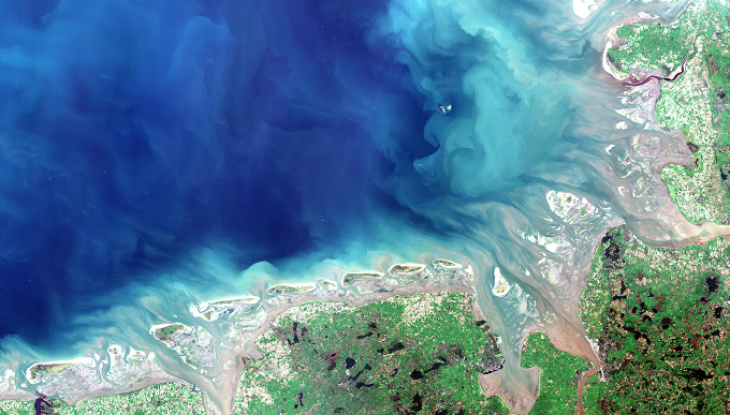Optical Oceanography

German Bight -image: data from ESA, processed by Hereon/KCO-
Phytoplankton in the ocean accounts for approximately half of global primary production and forms the foundation of the marine food chain. It is, therefore, of vital importance.
Optical remote sensing methods are commonly used to measure phytoplankton biomass over large areas of the open ocean. In coastal areas, however, the water can be quite turbid and optically complex due to suspended matter and gelbstoff. It is, therefore, insufficient to use only a few spectral wavelengths for analysis, as is normally done in the open ocean.
The Optical Oceanography department develops methods to determine water constituents in coastal waters using the spectral reflectance of the surface ocean. We carry out measurements in and over the water, using satellites (ocean color), piloted aircraft and unoccupied drones. We also develop methods to study phytoplankton diversity and to measure dissolved and particulate organic carbon. Our research spans a range of spatiotemporal scales, from short-lived phenomena (eddies), to medium-term events (algal blooms), and long-term time series and climatic trends.
